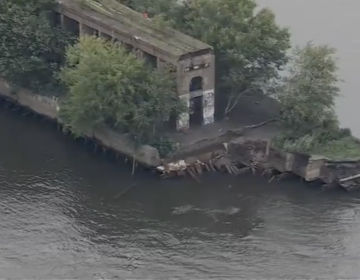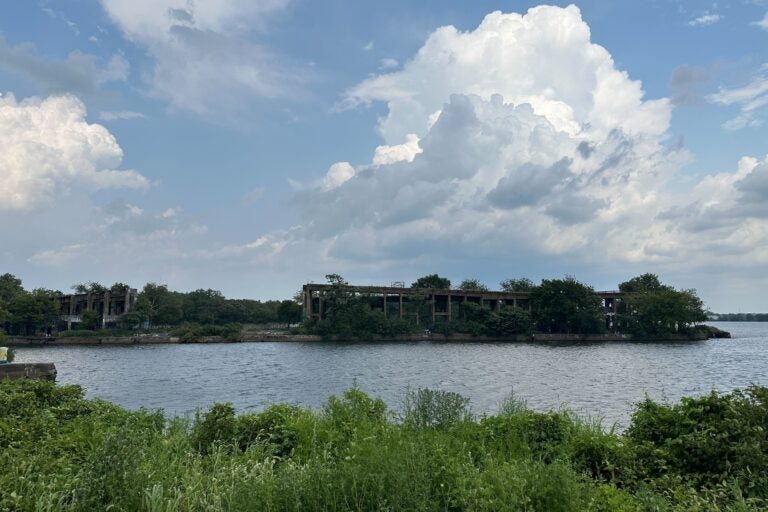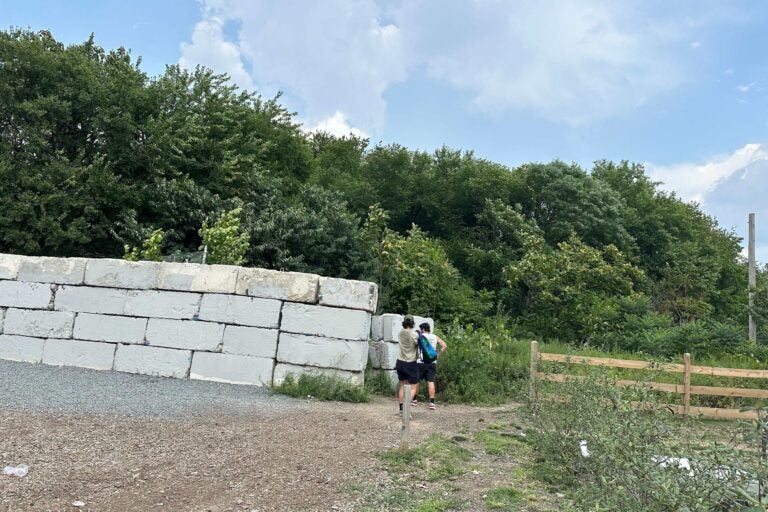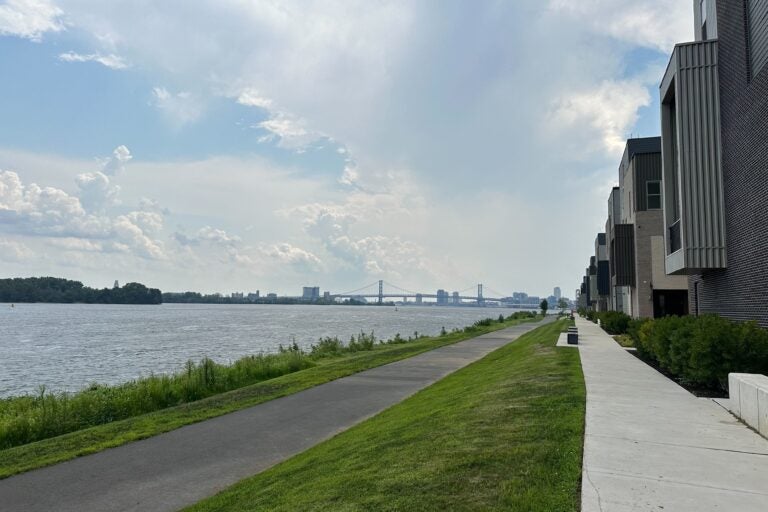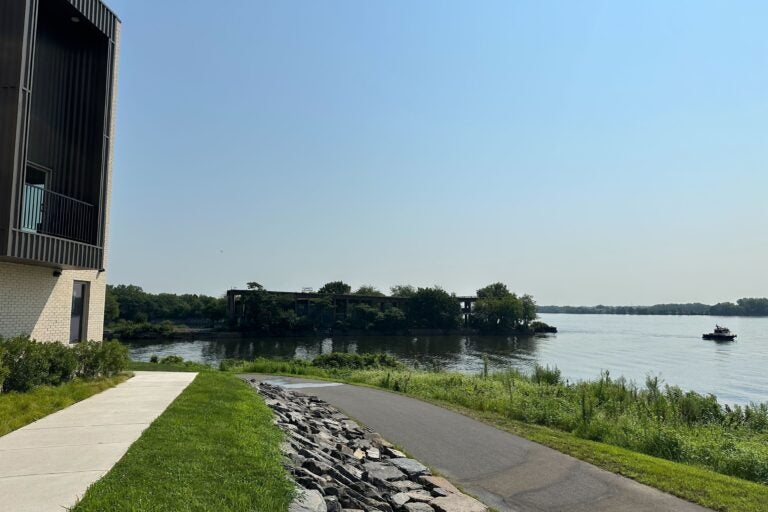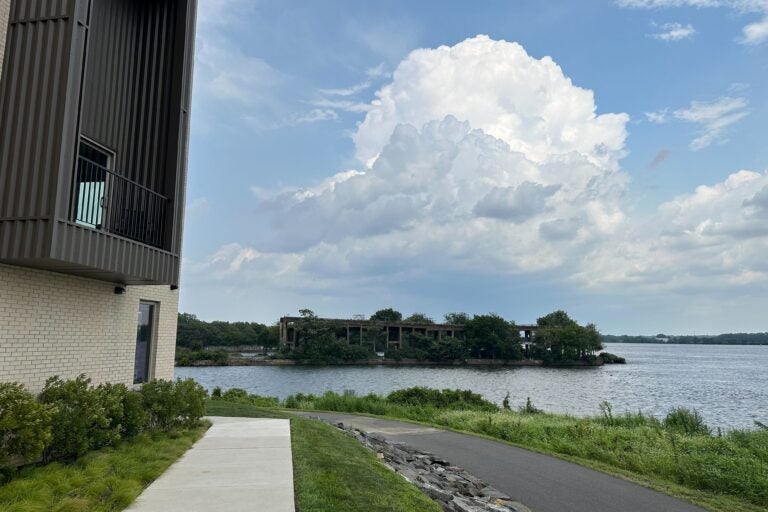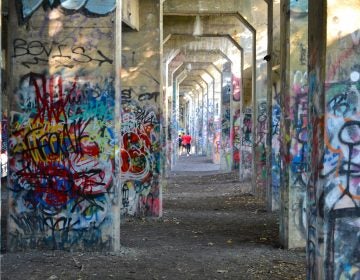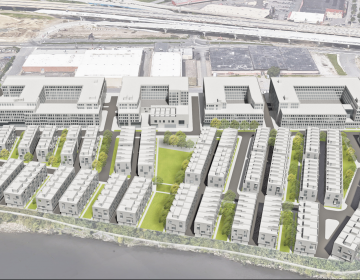Conrail warns Philly’s Graffiti Pier trespassers it’s not a public park — and might never be
The city is still pushing for Graffiti Pier to join its public park network, but Conrail is considering “all viable options” after the pier’s partial collapse.
Listen 1:14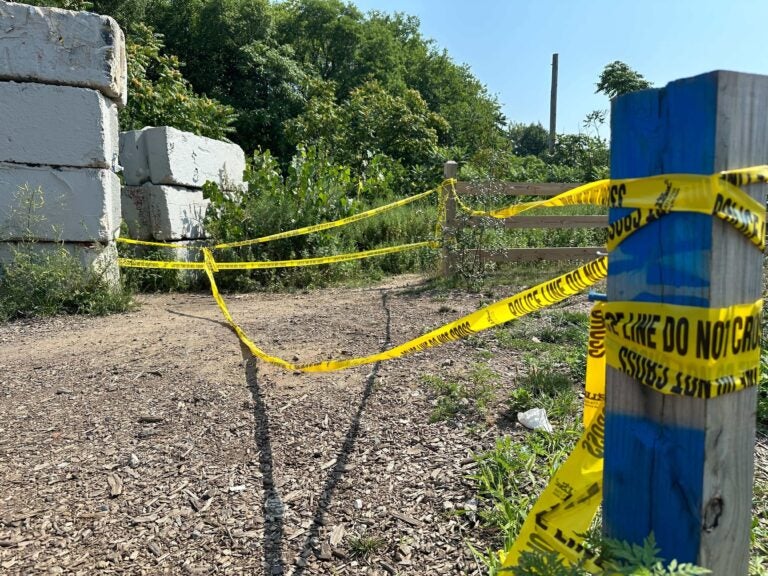
Graffiti Pier in 2024 (Kristen Mosbrucker-Garza/WHYY)
From Philly and the Pa. suburbs to South Jersey and Delaware, what would you like WHYY News to cover? Let us know!
Philadelphia muralist Ash Ryan doesn’t think she would be getting paid to do art today if it wasn’t for her experiences on Graffiti Pier.
That’s because when the world economy shut down during the COVID-19 pandemic, Ryan lost her job as a floral designer. So she began spending hours outside at the old Port Richmond coal pier experimenting with cans of spray paint.
“There weren’t a ton of people there. Just me and my friends,” Ryan said. “I was just blown away. I’d never seen such a massive place and every square inch covered [with art].”
More than 30 years ago, Graffiti Pier was adopted by renegade artists, musicians and dancers after industry stopped using it to export coal. Everyone simply slipped behind locked gates and defied no-trespassing signs to party, make art or fish. People experiencing homelessness pitched tents, the pier’s owner asserts there was open drug use and other illegal activity. The site has its own social media channels documenting the wide range of experiences from engagement photo shoots to mosh pits.
About five years ago, the Delaware River Waterfront Corporation proposed transforming the site into a legal public art park after owner Conrail pushed for a crackdown on openly illegal activities. That park was supposed to open this year, but the public-private partnership stalled.
Instead, after standing for nearly 100 years, the last 12 feet of the pier collapsed into the Delaware River last week.
Conrail officials suggested it was simply erosion from the water and time that separated the rebar from the concrete structure – including the steel structure at the end that curved upward to the sky — and crumbled into the water.
Now the railroad service business is weighing its options: public park, condos or active industrial site.
“I would love to see [the pier] come back. There’s no reason that this business can’t come back to the Port of Philadelphia,” said Brian Gorton, president and chief operating officer of Conrail. “There’s a tremendous opportunity for growth and the pier could be part of that.”
The company doesn’t want anyone stepping foot on the 182-acre property that sits between East Cumberland Street and East Allegheny Avenue and stretches along the Delaware River.
Since the partial collapse, there’s a new fence to discourage the curious. Even Gorton has visited the pier in person and kicked out a dozen people himself.
“They are trespassing. They really don’t need to be on that pier,” Gorton said. “It’s not a city park. It’s an industrial area that’s not there for public use.”
Gorton said he wants to prioritize the pier’s potential to create jobs and stimulate the regional economy as an industrial site, but he’s not “opposed to a public park.”
“We really need the assistance of the city and the state if there is trespassing,” he said.
While Conrail signed a memorandum of understanding with the Delaware River Waterfront Corporation several years ago for a 6-acre public park that included Graffiti Pier – Gorton wasn’t working for the company at the time. It was under the tenure of now retired Conrail president Tim Tierney, who left in 2021.
The Port Richmond rail yard is “still very active” with daily train service for customers and sits just north of the pier, Gorton said. The area includes Riverside Materials, which manufactures and recycles asphalt used to build and repair roadways.
Conrail met with the city of Philadelphia, specifically Councilmember Mark Squilla, who represents the district which includes Graffiti Pier, this week.
Squilla said he’s confident that the pier will become a public park someday and disagreed that the city waited too long to make it happen.
“The goal would be to maybe streamline the process and have a new agreement drawn up,” he said. “They seemed very amenable to trying to work something out, at least with me. [Conrail] still has to maintain it if they’re not going to sell it. What’s most important to us is having access to the river.”
There is already some grant money associated with the public park, but since it hasn’t been spent yet, officials said they wanted to make sure it’s still available for that purpose.
“This location has been a challenge for quite some time. It’s hard to secure,” he said. “I do believe that the best use of that property would be open space.”
The pier was a legacy asset from Conrail’s takeover of the defunct Reading Company. It was once used to export coal from mines in northeastern Pennsylvania.
The business itself still exists today in Baltimore, where CSX maintains a coal export terminal from mines in West Virginia and Pennsylvania.
Gorton isn’t concerned about the structural integrity of the pier, which has been monitored at least once a year. He is interested in getting customers to use the pier for business again — even as a coal pier.
“Some suitors approached us to sell the land for development of condos. Then we’re also had some customers that come in and say, ‘Is that a viable option for us to use that pier for certain commodities coming into Philadelphia?’” he said. “It’s not like the entire pier is in jeopardy of collapsing, that’s not the case. Structurally, I don’t have concerns with the pier that’s left. We’re doing further evaluation and sonar to make sure.”
But the city of Philadelphia’s Licenses and Inspections records show that the company hasn’t shared those annual reports with the city and it faces a fine.
As for the Delaware River Waterfront Corporation, purchasing privately owned land along the riverfront is the organization’s biggest challenge to redevelopment and public access for a trail that runs along the water’s edge.
The nonprofit declined an interview for this news story.
“It is too soon for us to determine how this will impact DRWC’s acquisition and future development of the pier,” said Joe Forkin, president of the Delaware River Waterfront Corporation, in a statement. “But it is our strong hope that we can continue working with Conrail to finalize the long-anticipated purchase agreement that will ultimately allow DRWC to provide meaningful public space for the community around the Graffiti Pier property.”
Gorton said that Conrail is open to offering a subsidy to DRWC, but is looking for “fair market value” for the pier. The assessed value of the entire Conrail property that spans 182 acres is $14 million — the public park would only be 6 acres of that.
“I want to make sure that we look at all, you know, viable options before we move forward,” he said. “The memorandum of understanding was that they would like to make that a city park, but there were really no negotiations on purchasing the property.”
As artists mourn the loss of what they considered to be an abandoned space that they poured good energy into for decades, public advocates are hoping the pier might still become a legal public space someday.
“Walking through [Graffiti Pier] felt like stepping into a hidden, creative world, full of poetry and imagination,” said Jane Golden, executive director of Mural Arts Philadelphia. “Many cities around the world have spaces where graffiti and street art emerge organically. Its recent collapse of a significant section of the pier leaves behind a void in our city’s cultural landscape.”
Artist Ryan said that for her, the pier is special because it’s a gritty wonderland that’s always changing.
“You can work on something for a few hours, work on it for a day. Or a couple days if you’re lucky. And the moment that you walk away, it might be completely covered up. It’s just like you painted it for the moment. You’re lucky if you get a picture,” she said.
And she’s not alone.
“Decades of Philly artists, layers and layers of paint like this thick,” she said gesturing with her hands. “You don’t really get to see that especially, like, within the city.”
And she’s yet to find anywhere else that gives her that same feeling or freedom.
WHYY News reporter Peter Crimmins and Billy Penn news intern Santiago Ortiz contributed to this news story.

Get daily updates from WHYY News!
WHYY is your source for fact-based, in-depth journalism and information. As a nonprofit organization, we rely on financial support from readers like you. Please give today.



